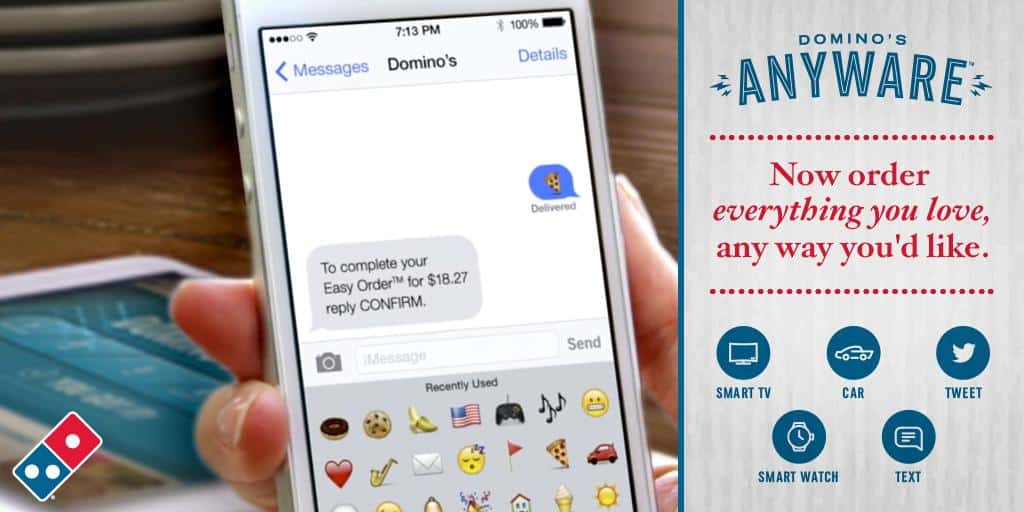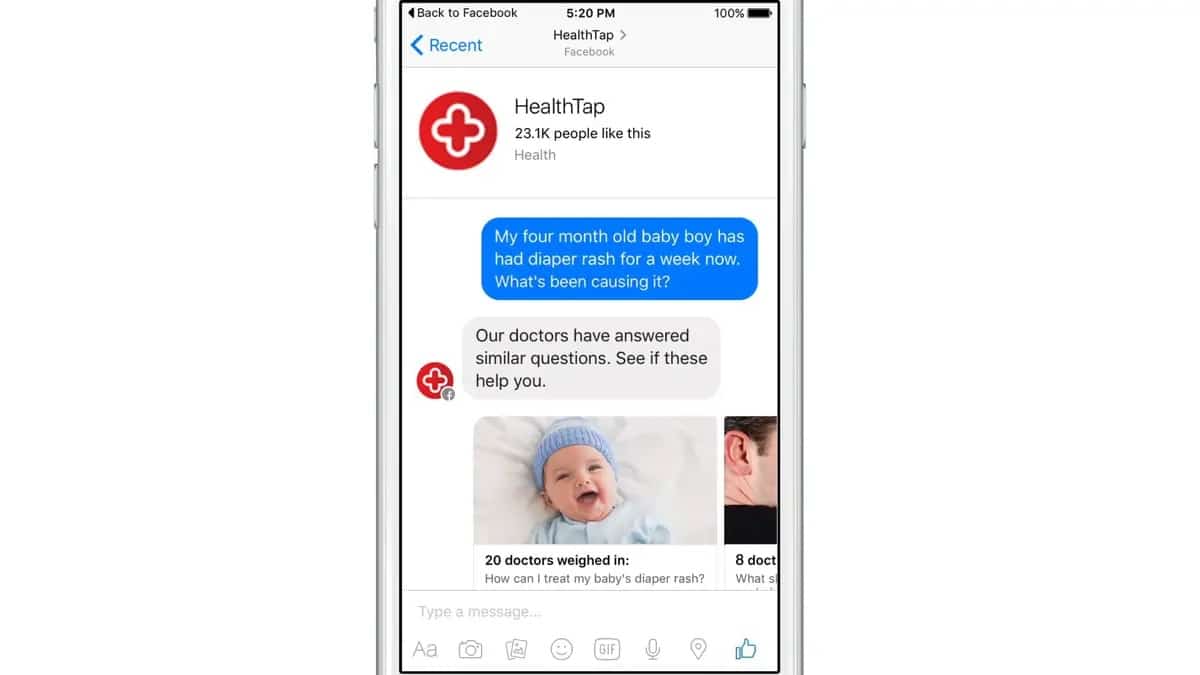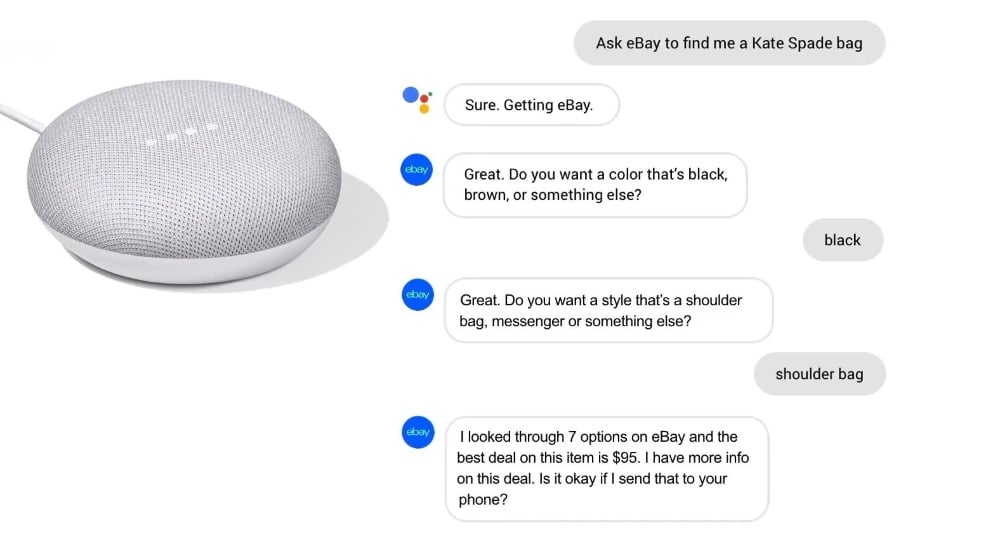This article has been contributed by Andre Oentoro.
In today’s world, customers have an endless sea of choices when it comes to brands and products. And they’re only getting more and more fickle each day. If your brand can’t provide them with a product or service they need, they’re going to leave you for your competitors.
This situation makes winning customers’ hearts an uphill battle, especially if you’re a small business owner trying to make ends meet. Without question, you need a differentiated strategy to get potential customers to trust and engage with your brand.
One strategy that will make your business stand out from the crowd to make is conversational marketing.
The internet has changed the way we do everything, including how we communicate with our family and loved ones. The same applies to our interactions with brands. As a business owner, you know that interacting with potential customers today is much more than creating engaging content, offering lead capture forms and being active on social media.
Interacting with potential customers needs to be more intimate and personal, so they can get to know your business and brand better. And that’s what conversational marketing is about….
What Is Conversational Marketing?

Up to 46% of customers will abandon a brand if they don’t provide excellent customer service. What they really want from brands – and what will make them buy products – is a real-time, personalized, one-to-one conversation.
Conversational marketing is a marketing model that heavily relies on the importance of real two-way communication. By providing 1:1 personal conversations across multiple channels, brands learn to understand customers’ needs and meet them how, when and where they want.
By using conversational marketing, you not only deliver your brand message much more effectively, but you also build a solid, more personal connection with your audience.
The best part is – and perhaps surprisingly – conversational marketing allows you to shorten your sales cycle. The model removes many touchpoints involved with the old-school sales funnel. Your small business can now reply to leads in real-time and close more deals quickly through a discussion online.
What Does Conversational Marketing Look Like?
This all sounds great, right? But how do you actually implement conversational marketing? Below are some effective ways you can leverage this model for your businesses.
Chatbots
Chatbots are probably one of the most popular ways to tap into conversational marketing. They’re a budget-friendly way to help you start with this engaging type of marketing.
This artificial intelligence tool doesn’t need a real human to respond to users. They help you respond to your customers anywhere, anytime, 24/7.
With chatbots, you can answer customers’ frequently asked questions automatically. As they type in their question, the bots prepare an answer and can supply a response almost as soon as the customer finishes typing.
You can set up a system whereby potential customers interact with a bot until they start asking more specific questions, then you or another member of your business can smoothly jump into the conversation hassle-free.
Here are some statistics that show you how worthwhile chatbots could be for your business.
- At least 40% of millennials interact with chatbots every single day.
- More than 47% of consumers would likely purchase a brand after they interacted with a chatbot.
- About 64% of internet users say 24-hour service is the best service that chatbots can offer, and it helps them a lot.
Live Customer Support
Live chat and call center teams can play a key role in conversational marketing. Offering real-time, human customer support is an essential tool for customer engagement and brand loyalty. According to research, over 86% of online buyers prefer proactive customer support to help them make an informed decision faster.
You can use a single live chat platform, or you may consider using multiple platforms. Using a range of live messaging platforms means that you can interact with your audience in their environment, on their terms – which is always a good thing as far as they’re concerned.
In this modern world, you might as well use channels like Facebook Messenger, Slack, emails and real-time messaging apps. Providing and managing several messaging platforms might be difficult, but it’s an easy way to communicate with potential customers via channels that they’re comfortable with.
To win hearts and generate conversions quickly, you need to be there for your audience whenever and wherever they want. By physically speaking and responding to customers’ specific needs, you can easily adapt the process for them in real-time and in a personal manner.
The Benefits of Conversational Marketing
We’ve established that conversational marketing is effective in winning customers’ trust and giving your brand a personal touch. What you may not know is that there are other benefits you can reap from this type of marketing.
1. Easily Record Valuable Data
By using chatbots for conversational marketing, you can record all sorts of actionable customer data. Obviously, you can easily gather demographic data, which will be valuable in effectively reaching your target audience for promotional tactics.
But you can also aggregate behavioral information, like the kinds of questions customers ask, the kind of information they look for and more. These are the sort of insights that will give you a whole new level of understanding of your target audience.
What happens when you understand what they want? You can create a truly customer-centered marketing strategy. You can use your insights to inform everything right down to the last operational detail to genuinely meet your customers’ needs. And if you can provide services that can make their buying journey easier, they should have no problem in trusting and purchasing your brand.
So, it’s safe to say that conversational marketing can help you to improve your next marketing campaigns and get better results constantly.
2. Start Nurturing Your Potential Clients
Once your potential customers have heard about your brand and want to know more, it means that they’re interested. And once they make a move to understand your brand better, it’s time to welcome them, and start the nurturing stage of their buying journey.
From friendly live chat pop up or chatbots, what really matters is that when someone browses your website, you or your team say hello and guide them to what they’re looking for.
Some potential customers prefer to browse independently and explore information alone, but direct interaction with the brand can also be an option. After you greet them, make sure you give them space and create a CTA for them to use if they require further assistance.
3. Humanize Your Brand
Using live chat and bots in a casual and friendly way makes your service much more natural and humane. You can avoid using generic forms of outreach, which your customers may consider impersonal.
The “human” interaction that conversational marketing offers will attract more potential customers to your brand, as they will be able to recognize your genuine care and respect for your customers.
You will also be in a better position to convince them to share their stories and experience with your brand. This can help you tell your brand story, and collect reviews or testimonials, which are vital to converting prospects.
4. Build an Emotional Connection with Customers

You can’t build a good relationship without a good conversation. If you can evoke some type of emotion in your potential customer, then your brand will start to mean something to them. With all the options they have available to them on the internet, your customers need something beyond the nuts and bolts of your brand to believe in.
Conversational marketing provides your potential customers a simple way to connect with you – somewhat like an experience in an offline store in a mall. When a potential customer has a positive emotional association with your brand, they are 8.4 times more likely to trust your business.
5. Boost Conversation Rates
Your website can be a powerful tool for converting potential customers into loyal buyers. But it definitely won’t help your cause if visitors have to spend hours (or even more than a few minutes) searching for the information they need.
Most potential customers (34%) find it off-putting when they can’t even get answers for basic questions. Undoubtedly, this can stop them from getting to know your brand further and making a purchase.
Conversational marketing provides potential customers with the answers and solutions they need quickly and conveniently. Not only will your potential customers trust you, but they will be able to make an informed purchase much faster. And that’s how conversational marketing helps you to sell more.
6. Save Time and Money
Small businesses are often stretched, with staff performing multiple functions with limited resources.
Adopting conversational marketing and automating key parts of the process means that they will no longer have to answer the same questions over and over again. One study found that marketers claimed chatbots reduced their customer service costs by at least 30%.
This frees up time for your team to spend on more strategic work, which will make the business more money in the long run.
Examples of Successful Conversational Marketing
Your conversational marketing goal should be to make your brand more human, giving your potential customers a great user experience while interacting with your brand.
Here are just a few brands that are using conversational marketing to successfully smash this goal out of the water.
Domino’s

Back in 2015, Domino’s introduced its new, improved, fun way to order pizza. All customers needed to do was to send a tweet or text a pizza emoji. Then, they’d have a pizza sent their way. They could also order through Alexa, Facebook Messenger, Smart TV and even Slack.
Domino’s have always tried to match their services with their customers’ preferences. With tis multi-platform ordering approach, the brand utilized different real-time communication channels to successfully cater to today’s fickle and picky customers.
Pro tip: Domino’s is aware that all their customers want is their pizza delivered to their door right away, so they don’t make the ordering process complicated. It’s vital to have a solid grasp of your customers’ needs to build loyalty. Once you crack the code, you can easily provide personal service that can make their lives a bit easier.
HealthTap

HealthTap wants to make healthcare more accessible for its customers by utilizing chatbots on Facebook Messenger. With their chatbots, customers can ask any health-related question. In a matter of seconds, they get answers from doctors and other healthcare professionals.
If customers want more details, they can contact a real doctor in real-time by clicking a “Get answers now” button. They are directed to the premium service, where they can talk to a doctor within minutes for $25.
Pro tip: Health is a personal topic. Therefore, one-on-one communication with professionals is extremely important to help customers solve their problems. If you offer a healthcare service, it’s always better to provide real-time service and an accessible personal consultation.
eBay

eBay has taken their service to the next level by utilizing voice search. While chatbots are a pretty popular type of conversational marketing, eBay went the extra mile by building it for Google Assistant. It means customers can easily access the eCommerce platform with Google Home or Android smartphones using just their voice.
Just say, “Ok, Google, ask eBay to find me…”. You’ll then be asked more questions to find you a highly relevant result. Once the bot finds the best deal for what you need, it will ask you whether you want to complete your purchase or not.
Pro tip: The ease of verbal conversation makes voice assistants seem like real people who help you get what you need in no time. That’s what creates a personal and engaging shopping experience. However, utilizing a voice search may cost you. So, if you’re a small business owner, make sure you take the best approach that works within your budget.
Final Thoughts: Conversations on the Customer’s Time
The way brands communicate and interact online with their customers is constantly changing. That’s why marketers have to continually monitor and adapt to the latest trends and technologies. Leveraging the latest and most effective ways to get your message in front of your potential customers makes it easier for you to meet them where they are and put your business ahead of the competition.
Since potential customers always have come to expect a much more personal and tailored experience, conversational marketing is now less of a nice-to-have and more of must-have. So, no matter what industry you’re in – from graphic design to healthcare – conversational marketing should be a tool in your overall business strategy.
_
About the author: Andre Oentoro is the founder of Breadnbeyond, an award-winning explainer video company. He helps businesses increase conversion rates, close more sales, and get positive ROI from explainer videos (in that order).
The post Why Conversational Marketing is Essential For Your Business first appeared on JUST™ Creative.
No comments:
Post a Comment